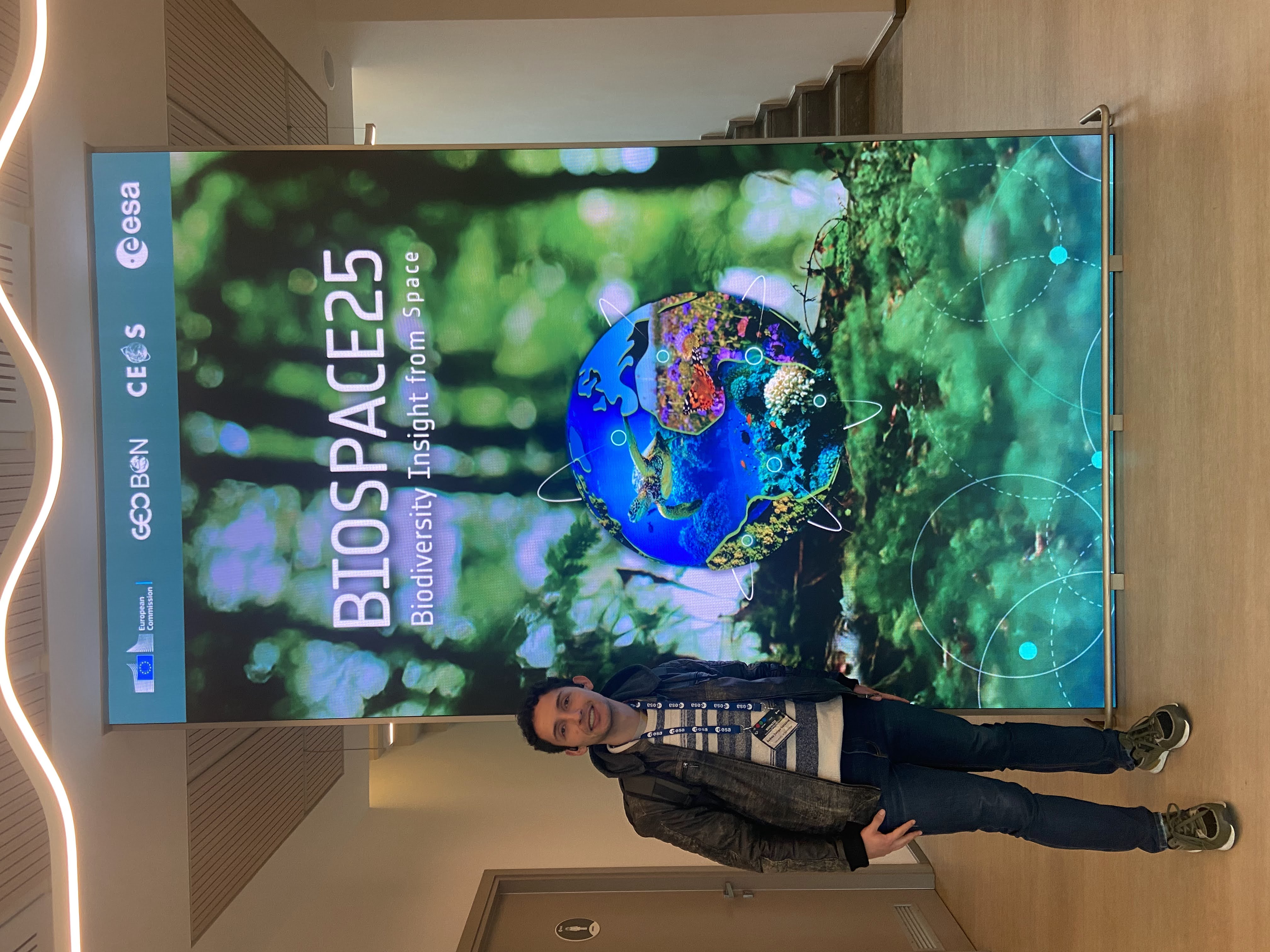BIOSPACE25 Blog
14 February 2025
Day 2
My presentation (available to watch here)
- A couple of people approached me about deploying the Terracorder, particularly an organisation that works in training Indigenous communities in the Amazon and Kenya. (Diana Mastracci)
- Got asked about the technical components of the terracorder (how far can two devices be from each other?)
- Several people scanned the QR code, so hopefully, they will contact me.
- A representative of the European Commission asked about the urban tree map (Have to watch the recording because he ran away after the presentation)
Poster Session
- Onkar did really great in his presentation. There are people who are working on using GeoFM for sustainable goals. There is a trend on using as much RS data as possible for different applications.
- Michael Munk from DHI presented the 3-30-300 work using EO at a global level. (I need to reach out to him in the following days)
- Spoke with Gonzalo Ortiz, postdoc from Copenhangen University about using deep learning for instance segmentation and species classification of trees using high resolution imagery. He did it in space and shared with me the paper they published. His group also developed a Python library for LiDAR processing that mimics LidR (asked me to send him an email for testing it).
Other
- Met Ahmed who works in using Sentinel-2 data to identify algae species in Portugal using basic ML. He is a postdoc in Lisbon
- Met Benjamin Lautner from Landbanking, from Munich. He actually presented in an AI4ER showcase (that I didn’t attend)
- Diana Matracci, from Venezuela, who works with the indigenous communities, explained to me how her organisation works. She has been working with them from 2019 but their funding runs out later this year. She is based in Czech Republic but was about to finish her PhD in Oxford.
Day 3
BioSCape Demo
- Funded by NASA to work and track biodiversity in Cape Town, South Africa
- It’s the largest spectroscopy and structural high-resolution open-source dataset
- ~700 bands of 5 m from UV, VIS and SWIR
- Network of audio recordings (birds) - part of field dataset collection
- NASA cloud service for jupyter notebooks didn’t work properly
UN Biodiversity Lab
https://unbiodiversitylab.org/en/
- National report
- Example with Colombia, Ecuador and Costa Rica
- It’s possible to download nature-based solution for climate change indicators from the platform
- 600 Global Data layers
- There is a course for accessing the resources in the platform
Other
- David Coomes mentioned about working on the tree species algorithm and test it with some images from Scotland (only two species)
- Met Eleanor Thomson from Gentil (added her on LinkedIn), who is very interested in my tree maps. She uses deep learning too to map individual trees using SkyBlue’s data. Said I would reach out to her after the conference.
Dinner
- Sat with people working on wetland ecosystems, from ETH, Copenhagen and Stockholm Unis, who are trying to model drought in European wetlands using MODIS which they use for transpiration. I suggested using ECOSTRESS, which they were not aware of.
- Met Sophie from the ESA office in Oxford
Day 4
- A lot of interest in species distribution modelling using several EO datasets combined with phylogenetic and environmental DNA. I feel like the terracorder could be used to improve species occurrence data. I really liked the talk about the hummingbirds in the Andes using SDMs with and without phylogenetic relationships to account for low-ocurrence/no-data species.
- Internet of animals (idea for Charles Emogor work)
- Integrated Biologging Framework. Integrating magnetic data from EO with bird migration data
- Funnily enough, I didn’t meet many Spanish speakers in the conference, but I ended up going to a bar after the conference with a group coming from the Adplfo Ibáñez University in Chile and a couple of other South Americans from different European institutions. I spoke with Laura Pérez-Giraldo, who works on using remote sensing in the Chilean Andes to understand plant diversity and pollination. There’s some possibility for collaboration in the future with the effect of trees on mental health in poor areas in Santiago.
